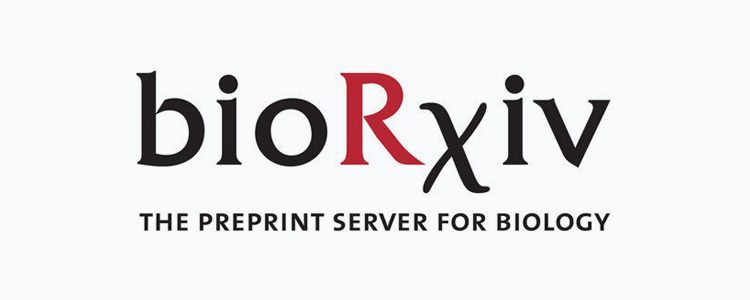BioRxiv: A Pre-print Repository for Life Sciences

Traditionally, publishing a research study in life sciences involves a researcher to select a journal based on the field and outreach of the study and then submit their manuscript to that journal. However, prior, to submission, the manuscript has to be formatted following the “author guidelines”, provided by the journal. The journal will then send the manuscript for peer-reviewing and return with its decision to the authors; on whether the authors can submit the manuscript to another journal in case of rejection, or submit an improvised version in case of conditional acceptance. This overall process of publication can take up to six months, depending on the journal and amount of updates or additional research required.
In streams like physics and mathematics, it is a commonplace for researchers to use arXiv, a repository system parallel to traditional publishing. The arXiv preprint or pre-publication server enables researchers to directly publish their articles online, in an open access repository, without undergoing the peer review process. Launched in August 1991, arXiv is operated and maintained by Cornell University Library and totals for over 1.2 million articles (as of January 2017) from different fields including physics, mathematics, economics, astronomy, computer science, statistics, and quantitative biology. Recently, biomedical researchers and publishers have initiated the use of the biologist’s version of arXiv—bioRxiv. Using this platform, the scientists can submit their unpublished manuscripts thus, escaping the publishing delays caused by mainstream journals.
The Development of BioRxiv
In November 2013, Cold Spring Harbor Laboratory (CSHL) launched bioRxiv and by the end of December 2013, it had already published 108 freely accessible, non-peer-reviewed papers. It is now gaining momentum among the life science community since its online content now shows that 4713 papers were published in 2016. Thus, its popularity is strongly increasing. Articles that are submitted to bioRxiv are categorized as New Results, which is what most articles generally present; Confirmatory results, which further confirm an existing knowledge; and Contradictory results. The last section is probably the most interesting one, which is lacking in other journals, while also offering the strongest opportunity of enriching the scientific debate. Readers can add comments to any published article, which will be accessible to all. This is another opportunity for increasing the exchange of scientific ideas; for some, a multiplicity of comments could be a satisfactory substitute to peer-reviewing (Ware, 2008). Although some journals already enable researchers to post comments on a study, this opportunity is still rarely used by scientists. However, implementing this as a principal feature on a new platform is likely to favor their broader use, thus increasing their relevance.
One important characteristic is that bioRxiv articles are aimed at having a second life after being pre-published. While a prerequisite for traditional publishing is that a study should not be published earlier, multiple journals now accept bioRxiv preprints as ‘new’ studies. Some even reduce the submission burden for authors by enabling direct submission of bioRxiv preprints to the journals, thus simplifying the steps between pre-publication and publication. With respect to copyrights, the authors keep the rights on their work. However, they will still want their work to be searched and cited by others. Moreover, bioRxiv pre-publications can be cited by other studies using their DOI as a citation.
Benefits of BioRxiv
When finalizing a research study, scientists now have an extra option in addition to regular publishing, where they can have a vast diversity of journals to consider along with the option to also submit a preprint to bioRxiv. This decision of where to submit the study should be taken in the early stages of writing since journals have different scopes, manuscript lengths, and text formatting. BioRxiv, thus, helps to eliminate some of these steps.
At present, bioRxiv, and other freely accessible pre-publishing options are supported by a group of major stakeholders called ‘ASAPbio’. The primary reasons for their support are:
- Absence of fees for submitting a study, which usually lies between $1000 and $1500 for a traditional journal
- Free accessibility of the pre-published study, thus increasing its potential readership; traditional journals require a researcher or an institution to have a subscription to the journal, either in print or online-only
- Reduced timeframes between the completion of a study and its availability to the scientific audience.
Some users of arXiv have also underlined that the pre-published version of a manuscript can undergo improvements during its ‘arXiving’ period, thus improving the quality and relevance of the version that is finally submitted to a journal. This is facilitated through comments, and the diversity in the points of view brought in by researchers not involved in the study.
The only negative of bioRxiv in comparison to traditional publishing is the absence of a peer review process. Though often criticized (e.g., Faggion, 2016), the peer review process generally favors the soundness of published scientific experiments and the quality of published articles. The generalized use of peer-reviewing relies on the idea that no one commits misconduct when submitting a study, which in most cases is evidenced during the peer review process.
After over twenty-five years of existence, arXiv has proved its usefulness in other scientific fields, promoting a quicker diffusion of scientific studies and enriching them through criticisms by peers. It is therefore likely that a more generalized use of platforms like bioRxiv should take place among the life science community in the coming years.
References:
C. M. Faggion, Jr(2016, February 26) Improving the peer-review process from the perspective of an author and reviewer. Retrieved from http://www.nature.com/bdj/journal/v220/n4/full/sj.bdj.2016.131.html#a1
Mark Ware (2008) Peer review: benefits, perceptions and alternatives. Retrieved from http://publishingresearchconsortium.com/index.php/112-prc-projects/research-reports/peer-review-in-scholarly-journals-research-report/142-peer-review-in-scholarly-journals-perspective-of-the-scholarly-community-an-international-study










